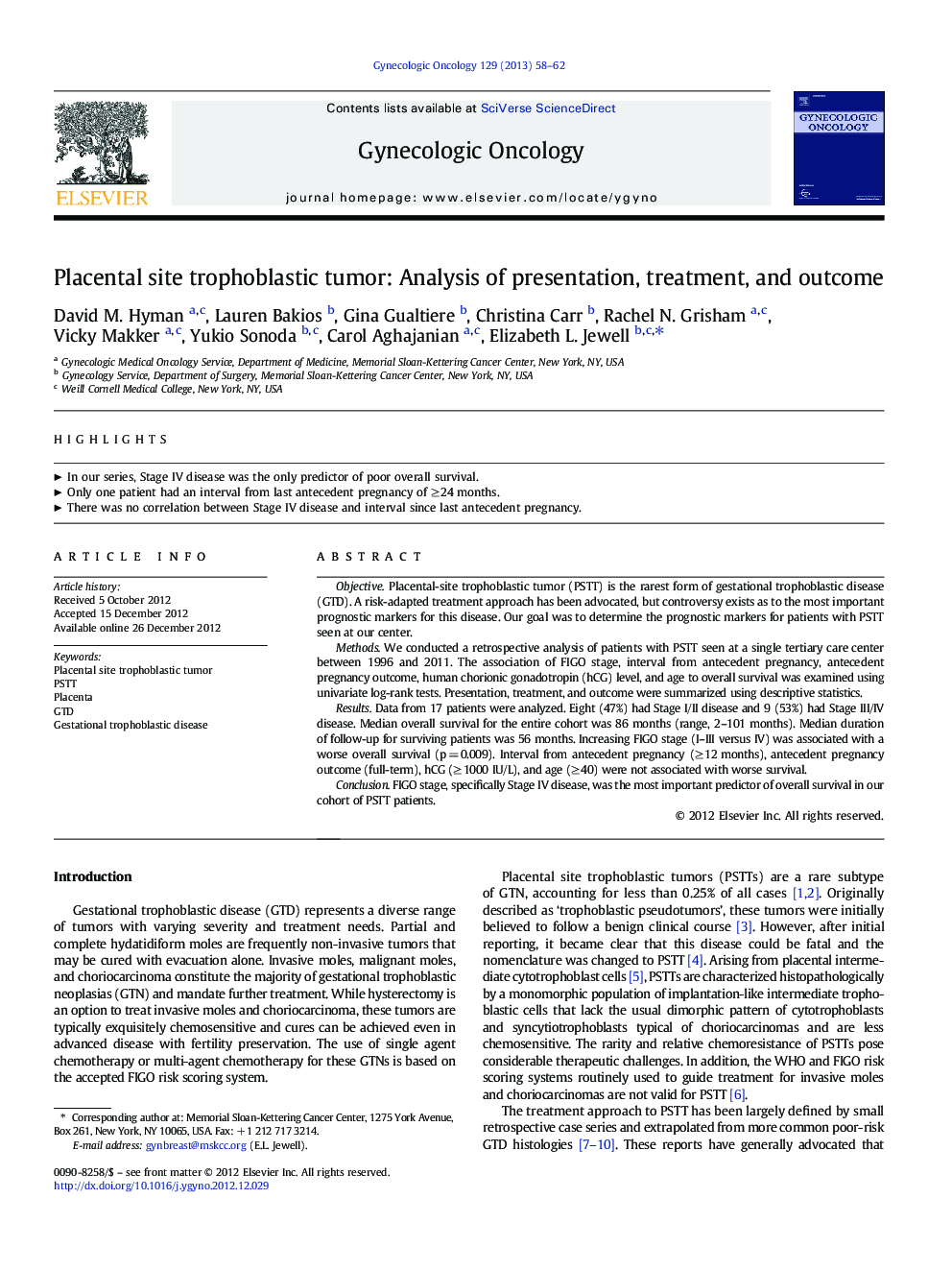| Article ID | Journal | Published Year | Pages | File Type |
|---|---|---|---|---|
| 6183785 | Gynecologic Oncology | 2013 | 5 Pages |
ObjectivePlacental-site trophoblastic tumor (PSTT) is the rarest form of gestational trophoblastic disease (GTD). A risk-adapted treatment approach has been advocated, but controversy exists as to the most important prognostic markers for this disease. Our goal was to determine the prognostic markers for patients with PSTT seen at our center.MethodsWe conducted a retrospective analysis of patients with PSTT seen at a single tertiary care center between 1996 and 2011. The association of FIGO stage, interval from antecedent pregnancy, antecedent pregnancy outcome, human chorionic gonadotropin (hCG) level, and age to overall survival was examined using univariate log-rank tests. Presentation, treatment, and outcome were summarized using descriptive statistics.ResultsData from 17 patients were analyzed. Eight (47%) had Stage I/II disease and 9 (53%) had Stage III/IV disease. Median overall survival for the entire cohort was 86 months (range, 2-101 months). Median duration of follow-up for surviving patients was 56 months. Increasing FIGO stage (I-III versus IV) was associated with a worse overall survival (p = 0.009). Interval from antecedent pregnancy (â¥Â 12 months), antecedent pregnancy outcome (full-term), hCG (â¥Â 1000 IU/L), and age (â¥Â 40) were not associated with worse survival.ConclusionFIGO stage, specifically Stage IV disease, was the most important predictor of overall survival in our cohort of PSTT patients.
⺠In our series, Stage IV disease was the only predictor of poor overall survival. ⺠Only one patient had an interval from last antecedent pregnancy of â¥Â 24 months. ⺠There was no correlation between Stage IV disease and interval since last antecedent pregnancy.
